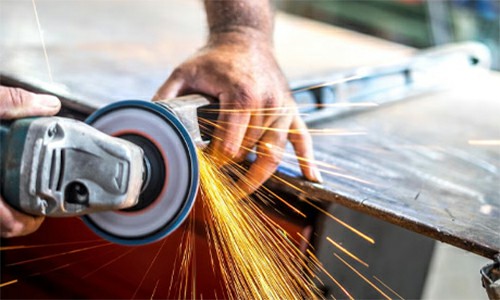Decoding the Hazards of Abrasive Wheels: The Essential Role of Training in Accident Prevention
Abrasive wheels are invaluable tools in various industries, offering precision in cutting, grinding, and polishing tasks. However, when mismanaged, they can pose significant safety risks. Understanding these risks and the importance of proper training can be the difference between a safe work environment and serious injury.
Common Safety Risks of Using Abrasive Wheels
Despite their effectiveness, abrasive wheels come with inherent dangers. Here are some common risks associated with their use:
- Wheel Breakage: Abrasive wheels can fracture due to excessive force or improper storage, leading to flying debris and severe injuries.
- Improper Mounting: Incorrect installation can result in uneven rotation, increasing the chance of wheel breakage and compromised safety.
- Equipment Misuse: Using the wrong type of wheel for specific tasks can lead to overexertion and potentially dangerous situations.
- Lack of Protective Equipment: Not wearing appropriate personal protective equipment (PPE) such as goggles or face shields can result in eye injuries and facial lacerations.
- Neglecting Maintenance: Failing to conduct regular inspections can increase the likelihood of accidents due to wear and tear on equipment.
The Importance of Abrasive Wheels Training
Proper training is essential for every employee who uses abrasive wheels. Training focuses on:
- Identifying and assessing safety hazards.
- Understanding and practicing the correct mounting techniques.
- Employing appropriate PPE and safety measures.
- Performing regular safety inspections and maintenance!
- Implementing emergency response procedures in case of accidents.
Real-Life Case Studies: Training That Made a Difference
Numerous cases highlight how adequate training has effectively prevented disastrous outcomes:
- Case 1: In a manufacturing plant in Dublin, a worker was trained in the safe use of abrasive wheels. After learning about the dangers of improper mounting, they identified a setup issue that could have led to a wheel breakage incident. Thanks to their training, they stopped work until the issue was resolved, preventing potential injuries.
- Case 2: In Cork, a construction company implemented a rigorous abrasive wheels training program for all employees. After employees learned about the importance of PPE, an observable decrease in injuries occurred—no instances of eye injuries were reported in the following year.
Best Practices for Abrasive Wheels Safety
To maximize safety when using abrasive wheels, consider these best practices:
- Conduct Risk Assessments: Regularly evaluate workplaces for potential hazards related to abrasive wheel usage.
- Schedule Regular Safety Inspections: Ensure all equipment is in good condition and meets safety standards.
- Encourage PPE Usage: Mandate the use of protective gear at all times when operating abrasive wheels.
- Implement Emergency Response Plans: Ensure all employees understand procedures to follow in case of an accident.
Conclusion: Invest in Safety
The key takeaway? Investing in certified Abrasive Wheels training can significantly mitigate risks associated with abrasive wheels, leading to a safer workplace for all.
If you’re interested in enhancing safety at your workplace, reach out to us at [email protected] to learn more about our Abrasive Wheels Course Online and how we can help keep your team safe.



 349,500 Offered Certificates
349,500 Offered Certificates
 24/7 Online Training
24/7 Online Training
 Money Back Guarantee
Money Back Guarantee
 Fully Accredited Courses
Fully Accredited Courses
